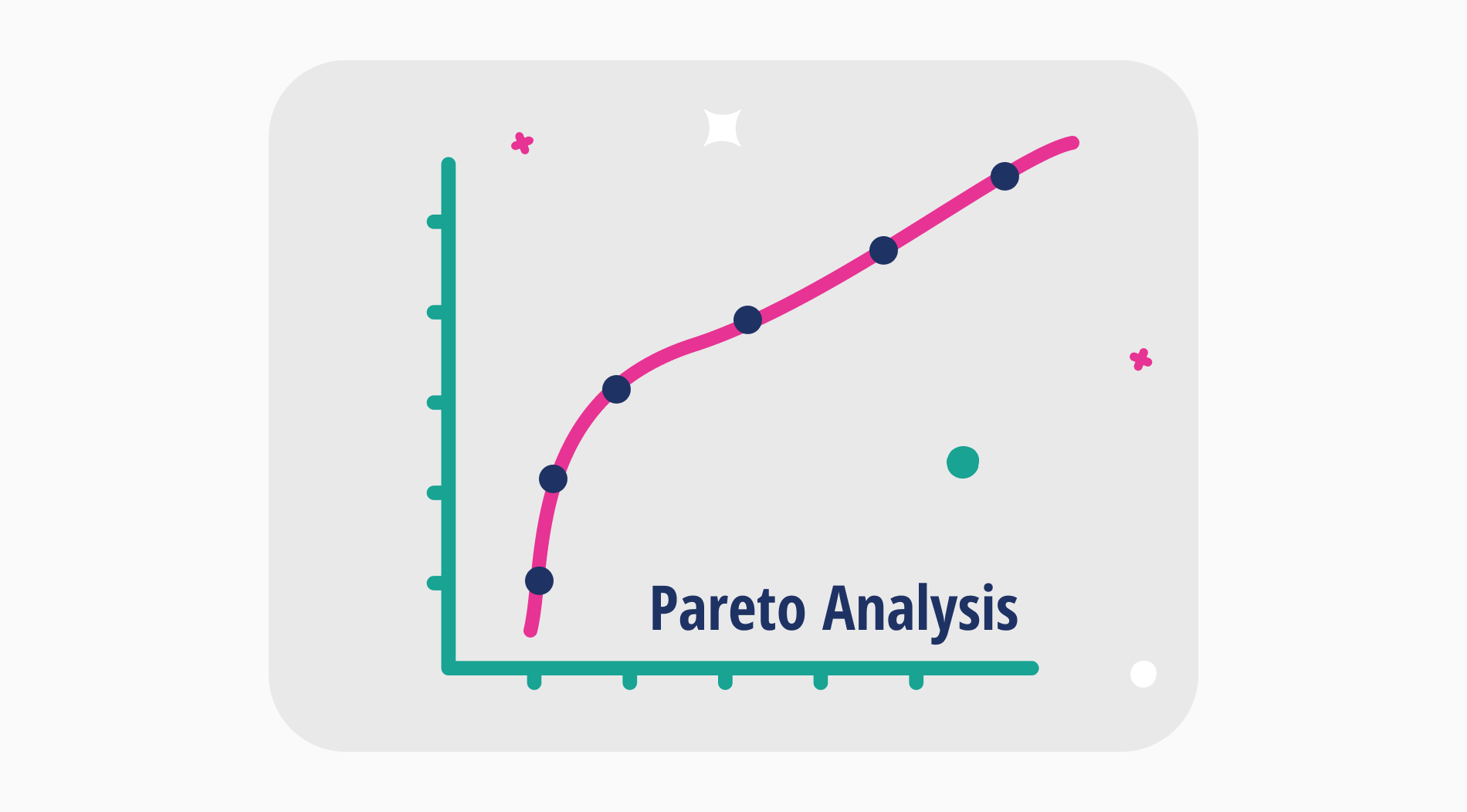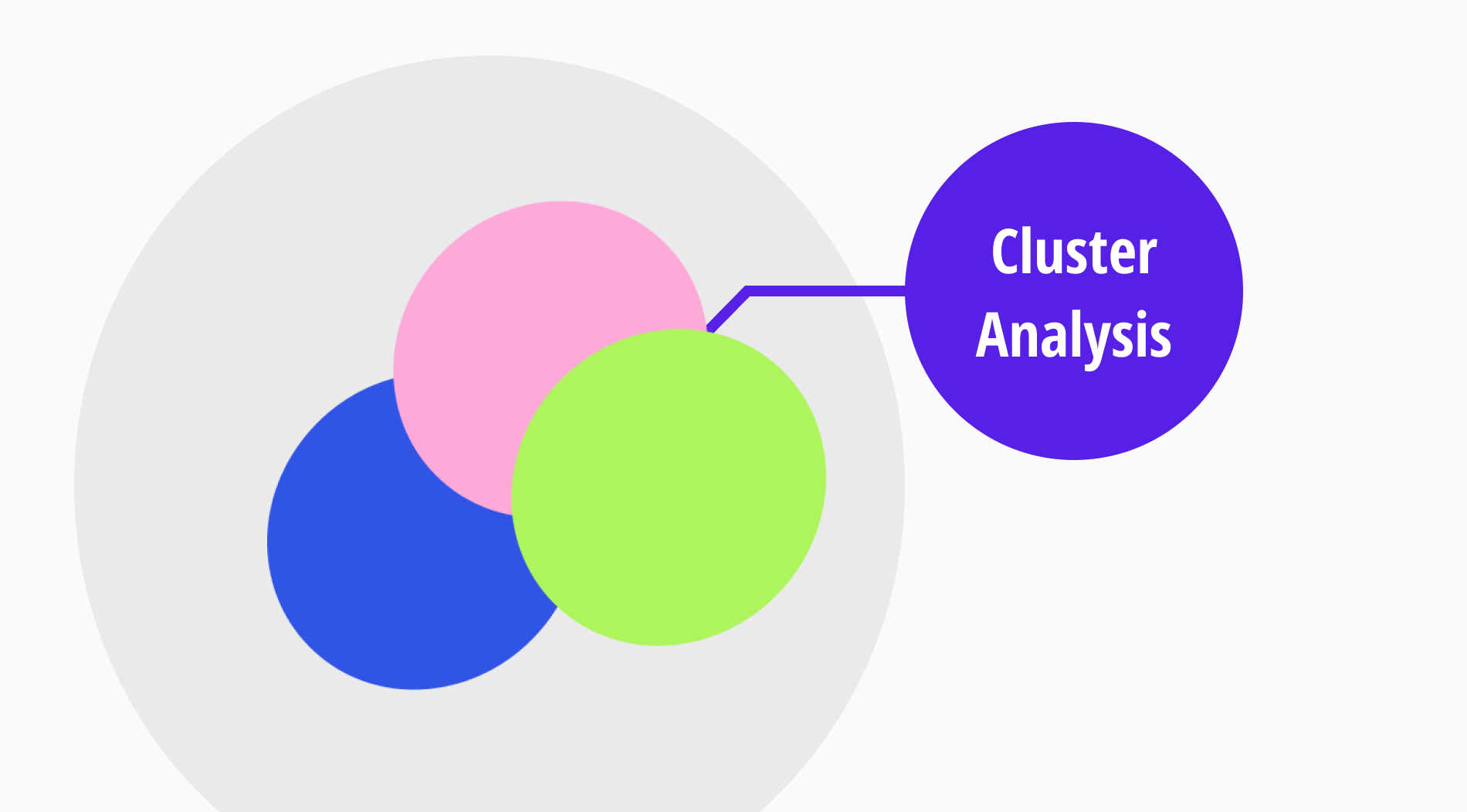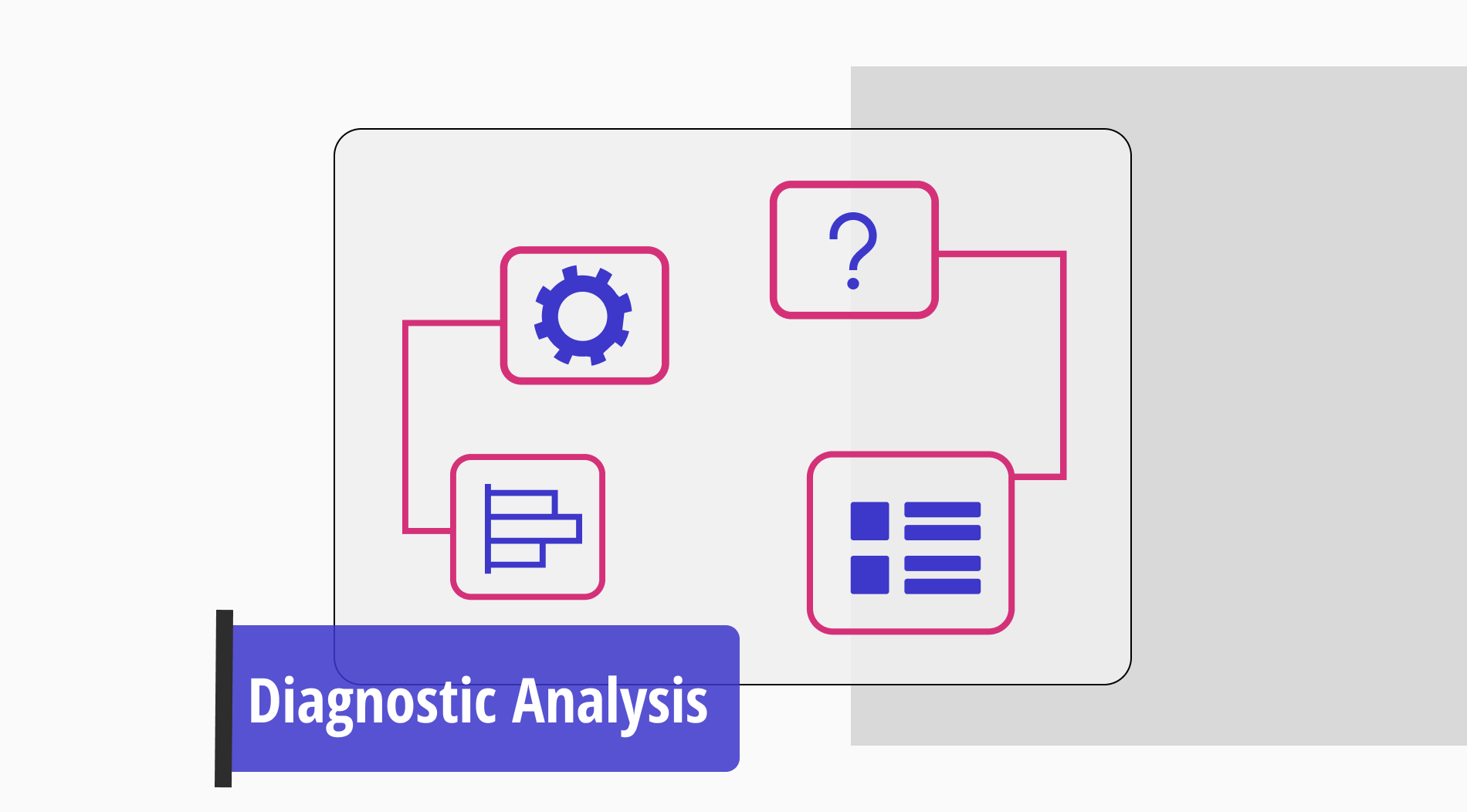
Just like a doctor diagnoses a patient, an analyst performs a diagnostic analysis to find the cause of a trend, pattern, or any condition affecting a particular situation. But of course, unlike the doctor's techniques, it requires techniques such as data mining and correlation analysis to make a diagnosis. And organizations and companies can act more robustly with the data generated by using these techniques.
However, it is necessary to draw a limit to what the diagnosis analysis does. It can be considered as an intersection between descriptive and predictive analysis. It gives a more detailed description of the situation than the descriptive analysis, but it does not go so far as to speculate about these descriptions, like the predictive analysis.
In this article, information about what diagnostic analysis is, when, and how to use it is shared with you, accompanied by examples.
What is a diagnostic analysis?

A diagnostic analysis is a type of data analytics used by businesses and organizations to answer the question of why a situation occurred.
The -Why- question here is important because while descriptive analysis investigates -What happened-, the diagnostic analysis examines the factors that caused the situation.
When to use diagnostic analysis
Knowing when to use diagnostic analysis in data analytics is essential for effective results. Businesses aim to take more consistent steps by carrying out data analysis, especially at turning points and before an important activity. It allows valuable information to be brought to light by being used to examine the depths of real-life scenarios. To better understand when to use diagnostic analysis, some specific scenarios of diagnostic analysis are listed below:
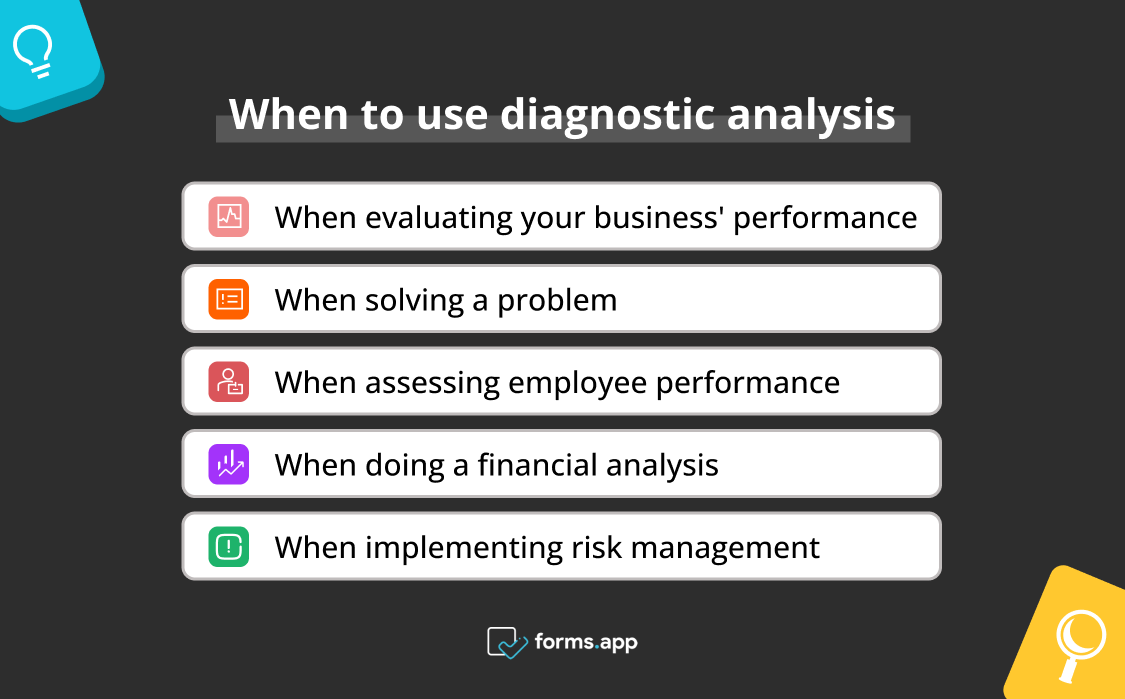
Best times to use diagnostics analysis
- When evaluating your business' performance: You think or know that there is an issue affecting the performance of your business. For this, you can perform a diagnostic analysis and get to the root of the problem.
- When solving a problem: Your business may have encountered a marketing or financial problem. Since the causes are not always visible, you can understand the causes with diagnostic analysis.
- When assessing employee performance: It is important for businesses to always keep their employees' performance high. For this, you can use diagnostic analysis to understand the performance dynamics of your employees.
- When doing a financial analysis: Visual charts of diagnostic analysis can help you make sense of the factors that drive your business's economic performance and help you prepare a better financial analysis report.
- When implementing risk management: Diagnostic analysis can be used to understand the causes of risks and even to make sense of these causes.
Benefits of using diagnostic analysis
Using diagnostic analysis in research is an integral part of every business and organization. It is a medium between descriptive analytics and predictive and prescriptive analytics. Knowing this position of diagnostic analysis will help you determine the direction of your analysis and find a solution to your problem more easily. Generally, diagnostic analysis has advantages such as:
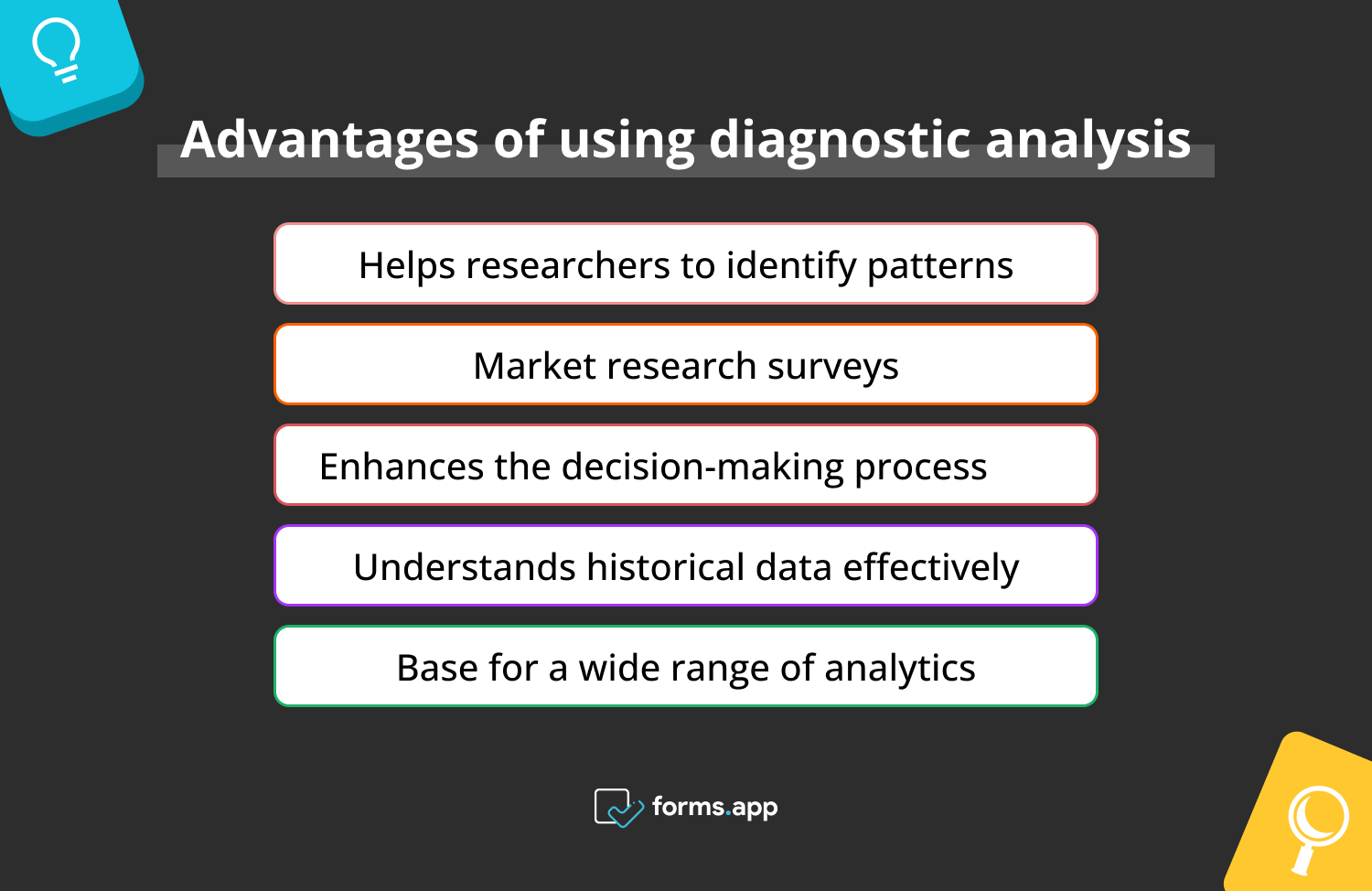
Pros of using diagnostics analysis
✅It helps researchers to identify patterns. These patterns are used as clues to get to the root of the problems and help reveal the big picture.
✅It enhances the decision-making process. Businesses can use the analysis as a base to strategize their future steps.
✅It is used to understand historical data effectively. Statistical models can show many data points you may have missed at one point in your research or hypothesis.
✅It is a base for a wide range of analytics. If you want to advance diagnostic analysis, you will reach predictive analysis. If you want to advance predictive analysis, you will reach prescriptive analysis.
Methods of diagnostic analysis
Which method you choose for the purpose of your data analysis is important. You can always turn to different methods, come up with a new method yourself, or use many methods together. However, diagnostic analysis techniques that stand out with their effectiveness will be mentioned now:
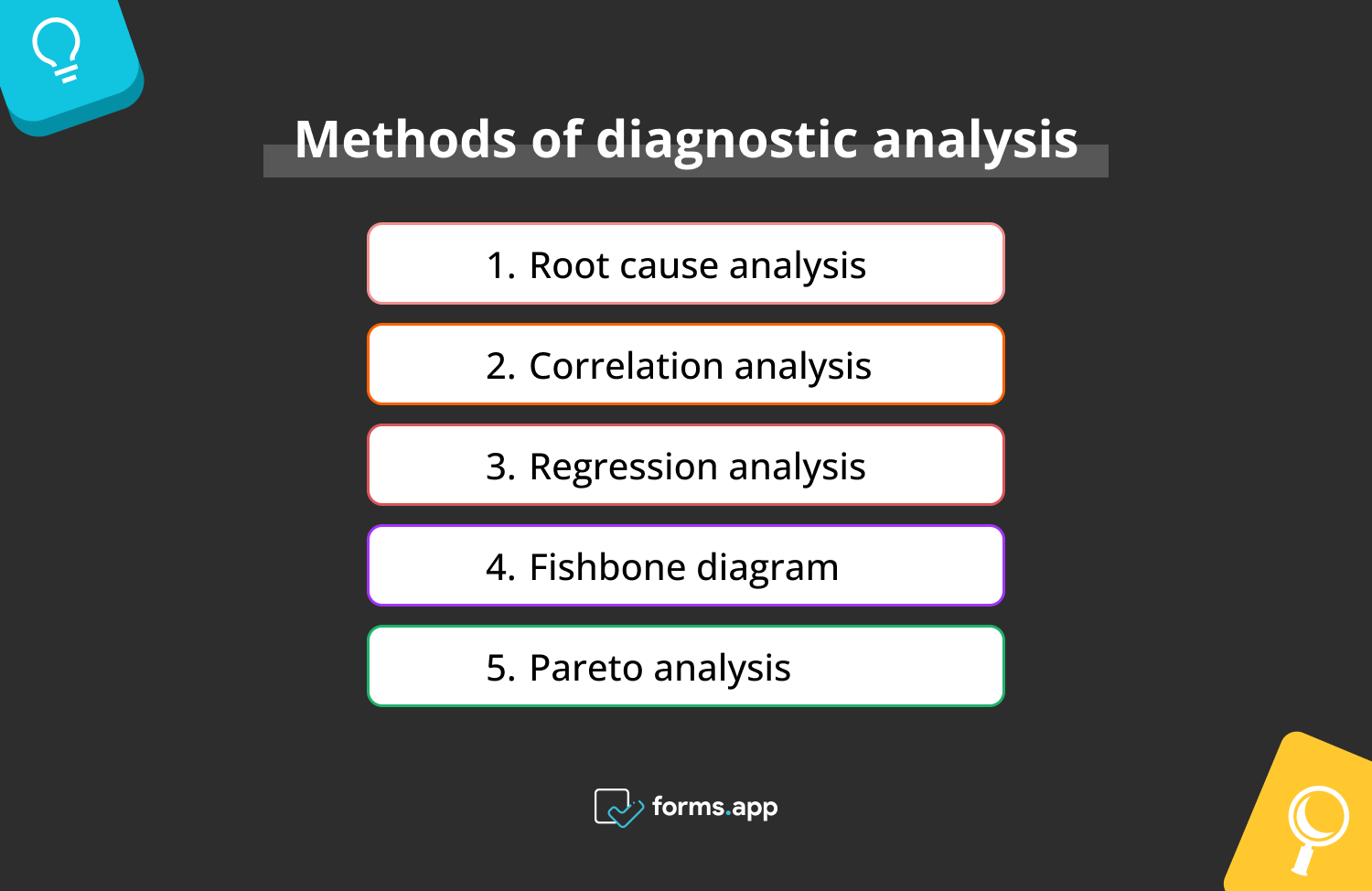
Diagnostic analysis methods
1. Root cause analysis
In a very simple way, it tries to find out why a situation happened, why another situation followed that situation, and why it went on like that. This type of analysis method is called Five Whys and is considered a solid method to reach the causes of whys.
2. Correlation analysis
It aims to reveal the initial causes of events by examining the relationship between two or more variables. When the balance of power between these variables is measured, the result can mathematically explain some realities.
3. Regression analysis
It can be used to find the source of the problem as a result of the relationship between the independent variable and the dependent variable.
4. Fishbone diagram
It is a very simple method created by writing reasons in different categories between the fishbones on a fishbone diagram. It is especially used in product design, production, and marketing.
5. Pareto analysis
It is an analysis method that lists many problems regarding a situation and predicts which one should be solved first. According to Pareto analysis, 80 percent of the effects or problems arise from 20 percent of the causes. Therefore, the first priority is to find out which action causes the most impact.
Diagnostic analysis tools
In the modern world, analysis with the help of artificial intelligence and programs has come of age. These programs are the apple of the eye of businesses in many respects. For example, they speed up the analysis process, process dense data, reveal details, and directly affect your decision-making process. If you're wondering what these programs are, here are five widely used diagnostic analytics tools:
- Tableau: Tableau is a very popular and useful data visualization tool. Its most prominent feature is its user-friendly interface and various visualization options.
- Microsoft Power BI: Microsoft Power Business Intelligence provides data visualization and business intelligence, which you can manually configure.
- SAS visual analytics: SAS Visual Analytics is another tool you can use to assess possible data outcomes and make informed decisions.
- Google Analytics: Google Analytics is a tool used specifically to track website traffic. Thus, it can provide data that reveals customers' behavioral patterns.
- Python: Python is always an efficient tool for data analysts. When combined with different packages, it can offer a special and unique experience for data analysis.
Real-life examples of diagnostic analysis
Diagnostic analysis is always ready to help you shed light on the dark data of the past. There can always be another reason affecting a cause, and it may not be possible to reveal it without a detailed analysis. Therefore, in order to understand the reasons, you can create models that you can use to produce solutions with the help of artificial intelligence.
Three diagnostic analysis examples will be shared with you to help you get used to the concept of it:
1. Sales performance analysis
It is known to everyone that the sales of a business do not always proceed in the same order. Your sales may change due to seasonal factors, competing companies, the emergence of new technologies, and similar reasons. If these changes are visible then a quantitative analysis like conjoint analysis can help you to provide better services to your customers.
However, sometimes these reasons may not be so discrete or visible, or even if they are visible, it is also important information to know which one has the biggest impact. So, you can only achieve this by getting to the root of the causes using diagnostic analysis.
2. Understanding customer churn pattern
Customer churn is one of the inevitable problems for every business. While businesses that manage to cope with this do not lose anything, businesses that cannot do this will suffer great blows. That's why diagnostic analysis is of vital importance. Of course it is not the only analysis type that can help you. You can utilize situational analysis to examine external and internal factors of your company.
On the other hand, diagnostic analysis allows you to analyze your customers' product usage patterns, payment methods, complaints, and satisfaction separately with modeling techniques. Thus, you can determine which issue you need to focus on; for example, you may require a better customer representative, which helps you to reduce customer churn.
3. Reasons for employees leaving your company
Companies sometimes encounter a pattern of massive employee turnover. It is essential for you to make a correct diagnosis in order to intervene in this problem correctly. You can create a diagnostic analysis model and reveal problems with the data you obtain as a result of job satisfaction surveys with your employees. Or you can use a qualitative analysis method like narrative analysis to improve your company’s identity.
Going back to the diagnostic analysis: For example, if employees complain most about your company's salary, diagnostic analysis will show that you should pay attention to this issue.
Conclusion
In the ever-changing landscape of the business world, diagnostic analysis can be seen as a compass. It provides businesses with the necessary tools to find a way through the vast ocean of data. It is dominantly used to understand events and causes by utilizing powerful analysis tools.
This article shares real-life examples and analysis methods with you to help you get better at business analytics. After reading this article, you will now be able to use diagnostic analysis effectively for your development.
Atakan is a content writer at forms.app. He likes to research various fields like history, sociology, and psychology. He knows English and Korean. His expertise lies in data analysis, data types, and methods.



 6 minuti di lettura
6 minuti di lettura